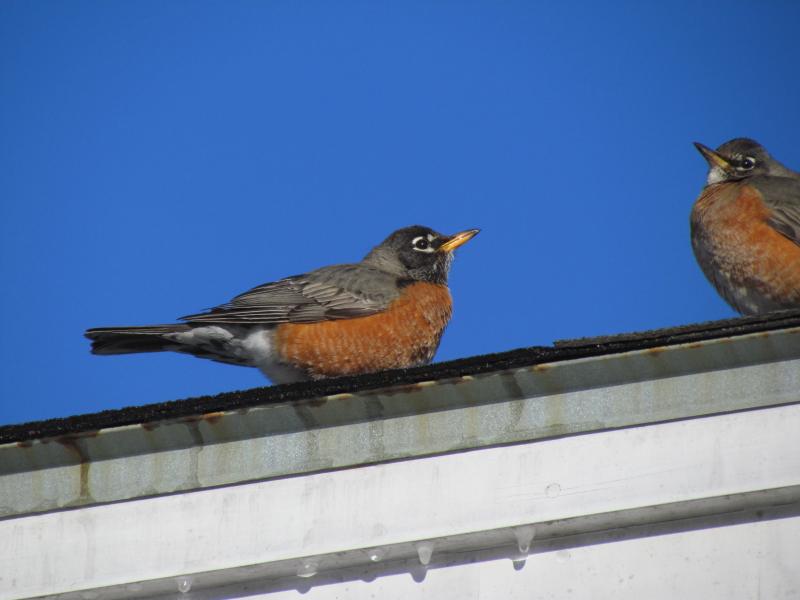Water, water everywhere but not a drop to drink
Living in a coastal area where open ocean water is always nearby and where, for us humans, freshwater is available anytime at the kitchen sink, it is easy to forget that for birds (and other wildlife) wintertime poses some incredible challenges in finding the daily supply of water needed for survival.
We thought of it a few weeks ago when we noticed house sparrows flying in under our car in the driveway. The heat from the engine was enough to form small puddles of water under the car for a little while before the water froze. The house sparrows noticed this, darted under and began drinking what they could get. Just this past week as temperatures rose we saw American robins, cedar waxwings and mourning doves flying up to our roof and drinking from the water melting away from patches of snow. Did you know that most birds have to drink by scooping the water up in the bill and then tilting the head back to let it roll down the throat. But doves are one of the few bird groups that can drink by sticking the bill in water and sucking it up.
Birds are also highly physiologically efficient in their water use. They reabsorb much of the water that they ingest so that their droppings are highly concentrated packets with relatively little water in them. Many birds actually get significant amounts of water from the food they eat — even seed-eating birds gain significant amounts of water from what might look to us like a dry seed.
But even as efficient as their bodies are, they still need some amount of daily water intake. Along with the obvious sources of wintertime freshwater, such as the edges of open rivers and streams, birds must certainly become experts at finding the warm seeps and tiny drips in rock faces and tree trunks in small sun-warmed spots.
Birds living on the ocean have another water problem of course. That is that although they are surrounded by water, it is too salty for their kidneys to process. Marine birds have evolved a remarkable solution: They have specialized glands in the head above the eyes that remove the salt from the blood, letting it dribble out the top of the bill. Experiments with gulls and puffins have found that they can rid themselves of a heavy salt load within hours. Gulls, eiders, scoters, and even mallards, are among birds that have salt glands that allow them to drink salt water.
This time of year, people often ask us what to look for by way of “bird signs of spring.” The next warm, springlike day, keep an eye out for birds in unusual places — like your roof. There’s a good chance they’re up for a drink!
Event Date
Address
United States

























